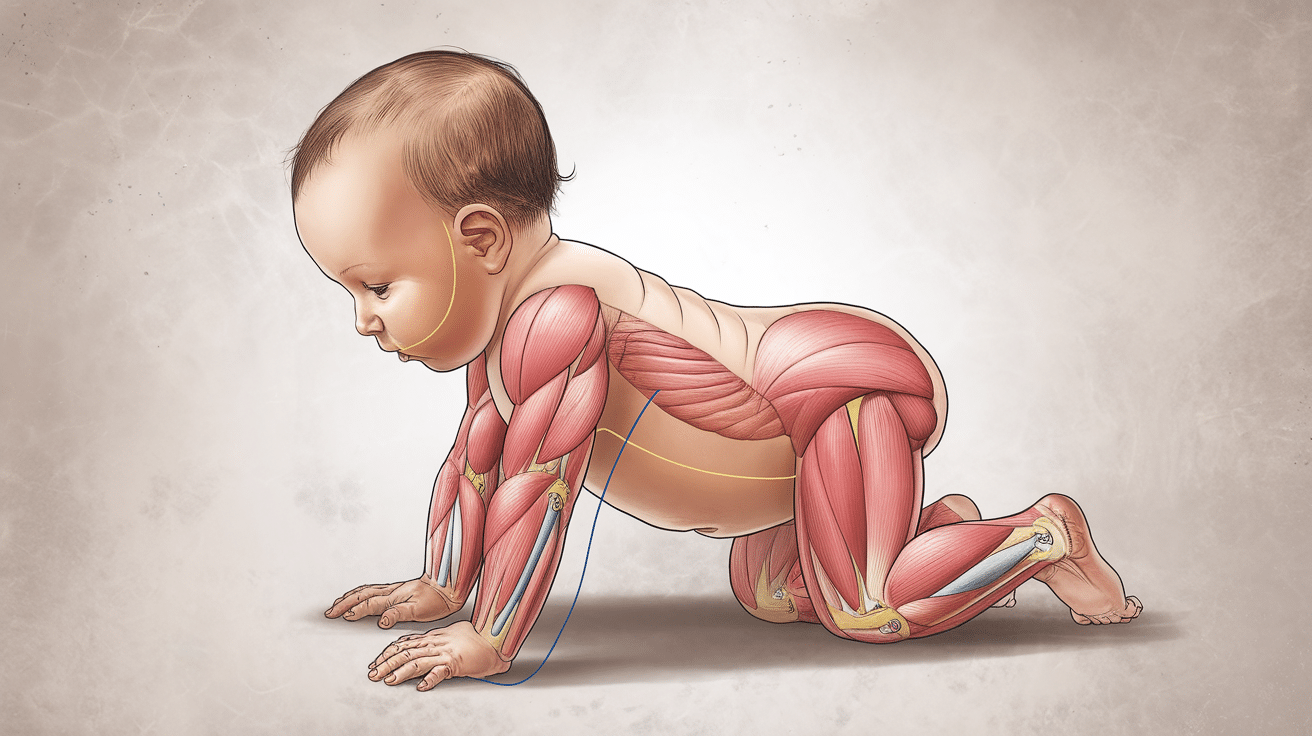
Witnessing your baby’s first independent movements is a magical milestone for parents.
Among these early mobility achievements, the army crawl—that determined belly-to-floor shimmy—captures both hearts and attention as babies begin their mission to investigate the world around them.
Many parents observe their babies pulling themselves forward with determination, arms working like mini-oars while their bellies stay firmly planted on the ground. This army crawl baby phase represents an important chapter in your child’s physical development story.
This movement pattern raises questions for parents and pediatric experts about timing, purpose, and what it might reveal about development.
Is it normal? When should it start? Should you worry if your baby prefers this low-to-the-ground approach for an extended time?
Here’s everything you need to know about your baby’s army-crawling development!
What Is Army Crawling?

Army crawling refers to babies moving forward while keeping their bellies in contact with the ground.
They typically pull with their arms and push with their legs in an alternating pattern (right arm pulls, left leg pushes, left arm pulls, right leg pushes).
This differs from traditional crawling (technically called “creeping”), where babies are up on their hands and knees with their belly lifted off the floor.
Some babies’ armies crawl symmetrically, using both sides of their bodies equally.
In contrast, others may show asymmetry, using one arm or leg more dominantly than the other, which pediatricians sometimes recommend monitoring.
When Do Babies Start Army Crawling?

Most babies who army crawl begin exploring this movement around 5-6 months of age. This is when crawling “ministones” (foundational skills) typically develop.
Army crawling often serves as a precursor to hands-and-knee crawling, which generally emerges between 8-10 months.
Interestingly, army crawling isn’t a required milestone. Many babies skip it entirely, proceeding directly to hands-and-knees crawling. Some may even bypass traditional crawling, moving from sitting to pulling up, standing, and walking.
Each baby develops at their own pace and follows their unique mobility path. Around 4 months, babies often start developing early crawling skills like pivoting in circles while on their tummy, pushing backward when belly-down, and beginning to integrate primitive reflexes.
These mini stones build the foundation for more advanced mobility, whether that includes army crawling or not.
Why Do Babies Army Crawl?

Babies often army crawl as their first mobility strategy because it requires less strength and coordination than hands-and-knees crawling.
This movement helps them develop crucial upper body strength in the arms, shoulders, and core muscles, which is needed for advanced movement.
For many babies, army crawling is an efficient way to explore while building the muscle strength required to lift their bellies off the floor. Some babies continue army crawling for longer periods because they find it effective.
This is especially true for babies motivated to move but haven’t developed the strength for traditional crawling.
Army crawling helps babies integrate primitive reflexes, develop cross-body coordination, and gain proprioception (awareness of body position).
It represents their determination to explore their surroundings using whatever they’ve mastered.
Is Army Crawling Normal?

Army crawling is completely normal and represents a natural development stage in many babies.
While some parents worry when their baby army crawls for extended periods, pediatric experts confirm this is typically no cause for concern.
Each baby develops at their own pace and may prefer different movement strategies. Some babies army crawl briefly before traditional crawling, while others skip this stage entirely. Some may army crawl for months before transitioning to hands-and-knee crawling.
What’s most important is that your baby shows interest in exploring their environment through movement.
As long as your child meets other developmental milestones, army crawling is simply part of their unique developmental path.
When to Worry About Baby Army Crawling?

Generally, there’s no need to worry if your baby predominantly army crawls. Most babies who army crawl will eventually transition to hands-and-knee crawling or move directly to pulling up and walking.
Pediatric physical therapists suggest monitoring extended army crawling (beyond 9-10 months) for these potential indicators:
- Asymmetrical movement (favoring one side)
- Difficulty maintaining hands-and-knees position when attempting it
- Limited leg movement during crawling
- No progress toward new mobility skills
What matters most is seeing forward progress in your baby’s development. Rather than focusing on specific timelines, watch for your baby attempting new movement patterns, even briefly, such as rocking on hands and knees or taking a few creeping steps before returning to army crawling.
Always consult your pediatrician with concerns about mobility development.
When Army Crawling May Indicate an Underlying Issue

While army crawling is typically a normal developmental stage, prolonged or unusual patterns of army crawling may occasionally signal underlying concerns.
Pediatric experts note that most army-bound babies develop normally, but certain movement characteristics may warrant further evaluation.
Rather than focusing solely on the crawling method, parents should observe overall development patterns, including how a baby transitions between positions and if they’re progressing in mobility skills.
Concerns Related To Autism
- Some research has linked less frequent hands-and-knee crawling with later autism diagnosis.
- Army crawling alone is NOT a diagnostic sign of autism.
- For autism concerns, look for additional delays in social interaction and communication.
- Studies show children with autism may have different early movement patterns overall.
- Always consider the complete developmental picture, not just the crawling style.
Neuromuscular Weakness
- Persistent army crawling past 10 months might indicate muscle tone imbalances.
- Low muscle tone (hypotonia) can make it difficult to maintain a hands-and-knee position.
- Asymmetrical crawling (favoring one side) may signal coordination or strength concerns.
- Difficulty bearing weight on arms or legs during play is worth discussing with a doctor.
- Muscle weakness often presents with other signs like delayed sitting or standing.
Summing It Up
Your army crawl baby may use this technique for weeks, months, or quickly progress to hands-and-knee crawling. Both scenarios are perfectly normal and part of their unique developmental timeline.
Army crawling demonstrates your baby’s determination, problem-solving skills, and motivation to explore the world around them.
This foundational movement helps build crucial strength and coordination needed for future mobility milestones.
If your baby continues showing interest in mobility and meets other developmental milestones, the specific crawling method they choose matters less than their forward progress.
If you have concerns about your baby’s army crawling patterns, trust your instincts and consult your pediatrician.
They can help determine if your baby’s movement patterns are part of their normal development or warrant further evaluation.
